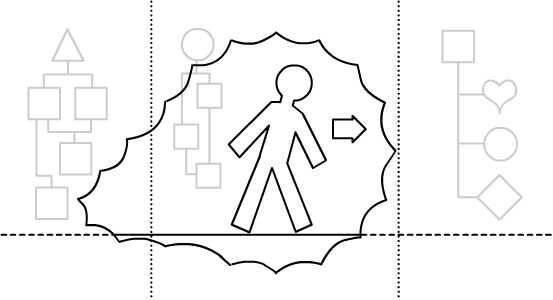Trending
Opinion: How will Project 2025 impact game developers?
The Heritage Foundation's manifesto for the possible next administration could do great harm to many, including large portions of the game development community.
Could the previously discussed components serve to illustrate a snapshot of Experience?

Previous Post: Memory and Prediction
In the previous posts, four fundamental components of Experience were defined and discussed: Perception, Cognitive Models, Memory and Prediction. In this post, those components are fit together to form a model of Experience as a whole. Everyone should feel encouraged to join the discussion and comment on or debate the assertions presented. All relevant comments are welcome and appreciated.

Static Model of Experience
A Unified Model of Experience
This diagram is a simplistic representation of an individual’s complete Cognitive Model of the world. This individual's worldview is asserted to be a network of many Cognitive Models, performing a variety of operations and providing the basis for all structure within Experience. In the center of Experience is the Self in the here and now. The Self is surrounded by a bubble of Perception. Note that the Self shown here is not the actual body, but the interpreted sensations of the body; as everything in this model resides in the mind. Everything perceived by the Self fits inside this bubble of Perception.1 To the left of the dotted line is the past; and in terms of the Cognitive Model, it is Memory. The time boundary of the Cognitive Model goes back as far in time as the most previous distinct memory this Self is currently concerned with. To the right of the dotted line is the future, and it is represented in the Cognitive Model by Prediction; those things which the Self assumes will be. Here, the time boundary of Experience is defined by the furthest prediction this Self is concerned with.
In essence, the Cognitive Model of the world itself is the whole of individual human Experience; with the other three primary aspects defining distinct subsets of the model: the Memory of the past, the Prediction of the future and the Perception of the present time. The indistinct portion of this model is the section of the Cognitive Model of the world in the present time that falls outside sensory Perception. This is the domain of current thought, imagination and critical thinking on concerns not perceived.
This static model would only describe a part of the story; a snapshot of Experience. To understand the dynamics of the system of Experience, one would need to consider how these components appear to interact and what forces influence those interactions.
1 In this evolution of the diagram, the bubble of Perception trails into the past (Memory), indicating that, as interpretations of sensation, it takes a measure of time to acquire some perceptions. For example, if you’ve ever caught a glimpse of something while hurrying along and a moment later you stop short and revisit that glance, having grasped its relevance and meaning a moment afterward; you’ve experienced this dynamic.
Next Post: Reliability
Read more about:
BlogsYou May Also Like